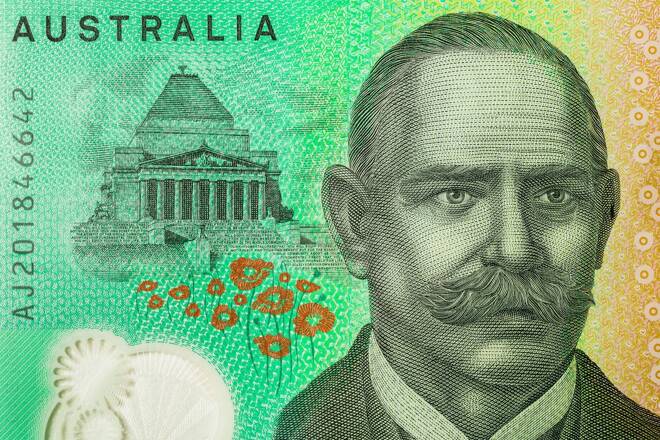Advertisement
Advertisement
AUD to USD Forecast: China, the Fed, and the US Housing Market in Focus
By:
China's stimulus measures remain in focus, with expectations for further measures a boon for the Australian economy and the Aussie dollar.
Highlights
- The AUD/USD gained 0.06% on Friday, ending the session at $0.66996.
- China stimulus measures and US Services PMIs delivered a mixed Friday session.
- On Monday, China and the US housing market are focal points.
Friday Overview of the AUD/USD
The AUD/USD gained 0.06% on Friday. Following a 0.54% increase on Thursday, the Aussie dollar ended the Friday session at $0.66996. The Australian dollar fell to a low of $0.66230 before striking a high of $0.67286.
China Remains in the Spotlight
Last week, the PBoC delivered commercial lenders liquidity to address concerns about a liquidity crunch. There were also efforts to bolster the real estate sector by easing downpayment requirements to acquire homes in Beijing and Shanghai. While the measures were favorable, the markets expect more significant measures from Beijing to support the economy.
Stimulus chatter or further stimulus measures from Beijing would influence the appetite for the Aussie dollar.
China accounts for one-third of Australian exports. Australia has a trade-to-GDP ratio above 50%. An improving macroeconomic environment in China would be a boon for the Aussie dollar and Australian economy. 20% of the Australian workforce are in trade-related jobs.
Improving labor market conditions could support consumer confidence and spending. Australian private consumption contributes over 50% to the economy.
There are no economic indicators from Australia for investors to consider on Monday.
US Housing Market and the Fed in Focus
On Monday, the US NAHB Housing Market Index will garner investor interest. Improving housing market conditions could signal an uptrend in US economic growth.
Accounting for over 15% of the US economy, economists consider housing sector data as a leading indicator. Notably, consumers purchase items for new homes, driving consumer spending. US private consumption contributes over 60% to the economy.
Economists forecast the NAHB Housing Market Index to increase from 34 to 36 in December. An Index value below 50 signals poor views on home sales conditions. Elevated interest, hawkish forward guidance, and mortgage rates have impacted. The Index moved through the 50 level in May 2023 before a return to sub-50 in September.
Beyond the numbers, investors must consider Fed commentary as the dust settles from the FOMC projections. Hawkish comments countering bets on a Q1 2024 Fed rate cut would impact the AUD/USD.
Short-Term Forecast
Near-term AUD/USD trends will hinge on US consumer confidence, inflation, and personal outlays. An improving consumer confidence trend, sticky inflation, and an upswing in personal income/spending could reduce bets on a Q1 2024 Fed rate cut. A more hawkish outlook for the Fed rate path could tilt monetary policy divergence toward the US dollar.
AUD/USD Price Action
Daily Chart
The AUD/USD held above the 50-day and 200-day EMAs, sending bullish price signals.
An AUD/USD move through the $0.67286 resistance level would give the bulls a run at the $0.68096 resistance level.
Focal points for the Monday session include China stimulus chatter, US economic indicators, and central bank commentary.
However, a fall through the $0.66500 handle would give the bears a run at the $0.66162 support level.
A 14-period Daily RSI reading of 64.82 suggests an AUD/USD move to the $0.67500 handle before entering overbought territory (typically above 70 on the RSI scale).
4-Hourly Chart
The AUD/USD remained above the 50-day and 200-day EMAs, affirming bullish price signals.
An AUD/USD move through the $0.67286 resistance level would bring the $0.68096 resistance level into play.
However, a drop below the $0.66500 handle would give the bears a run at the 50-day EMA and the $0.66162 support level.
The 14-period 4-Hourly RSI at 60.23 indicates an AUD/USD return to the $0.67500 handle before entering overbought territory.
About the Author
Bob Masonauthor
With over 28 years of experience in the financial industry, Bob has worked with various global rating agencies and multinational banks. Currently he is covering currencies, commodities, alternative asset classes and global equities, focusing mostly on European and Asian markets.
Advertisement
